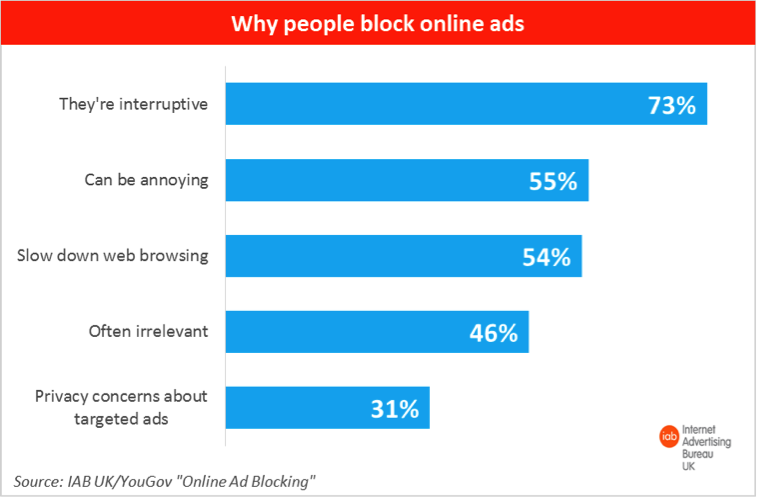Tri Huynh is founder and head of business development for AdSorcery, which aims to circumvent ad blockers.
The article was published on Digiday on November 27, 2015.
Almost every Millennial nowadays know what ad blockers are. Simply said, an ad blocker is a tool (typically installed as an Internet browser extension), which prevents the delivery of ads across websites, videos and other online content.
Blocking ads is often portrayed as a consumer benefit. But the truth is that it can significantly cut into the revenue that helps keep content producers and websites successfully operating.
Through a simple click of a button, users can download and install a blocker to stop ads in 5 seconds. This often comes as a response to a cluttered site layout or lagging performance due to ad delivery.
Users want to have an ad-free experience while they surf the web. However, they are also highly resistant to any sort of pay wall for the delivery of content.
The question this conflict raises is simple: what’s the compromise here which allows ad delivery without significantly impacting the user experience? How can sites and publishers decrease the damages caused by these lost revenue streams?
Understand why visitors are blocking ads
Getting around the implementation of an ad blocker often boils down to understanding how a user interacts with a site. This includes monitoring and analyzing value flows, click-through rates and ad relevance/preference.
Once these components are better understood, a website or content provider can better develop a response to help recover potential losses.
Explore different tactics
Below, several potential options are outlined to help publishers and websites deal with ad blocking within the user experience:
- Create User Trust: Visitors are more likely to whitelist a site from a source they trust, support and enjoy.
- Adjust the User Experience: In many cases a website’s display can directly change based on the detection of ad blocking extensions or software.
- Monetize with Other Approaches: Finding alternative sources for monetizing can also help reduce the damage. This could include sponsorship deals, affiliations and other strategies.
- Use Ad Block-Friendly Ads: Publishers could go low-tech to display ads that fall underneath ad blocking services.
- Find Ways Around Ad Blockers: Technological innovations to site design could allow ads despite a blocker. However, these are frequently addressed through subsequent updates to the ad blocker.
- Integrate Advertising with a Brand: Branded content and native advertising creates an integrative experience for users (rather than an interruption or a delay).
Finding the Right Solution
Responding to ad blockers and developing a solution is not a one-size-fits-all approach. Site owners, content producers and advertisers need to respond based on their specific circumstances, data and related areas.
In most cases, ad support comes down to building a connected audience willing to support a content producer with non-invasive, intuitive and relevant ads. This type of trust takes some time to develop and grow. Fortunately for most sites, this type of approach is an investment process that helps to mitigate the risk and damage that ad blockers may cause.


